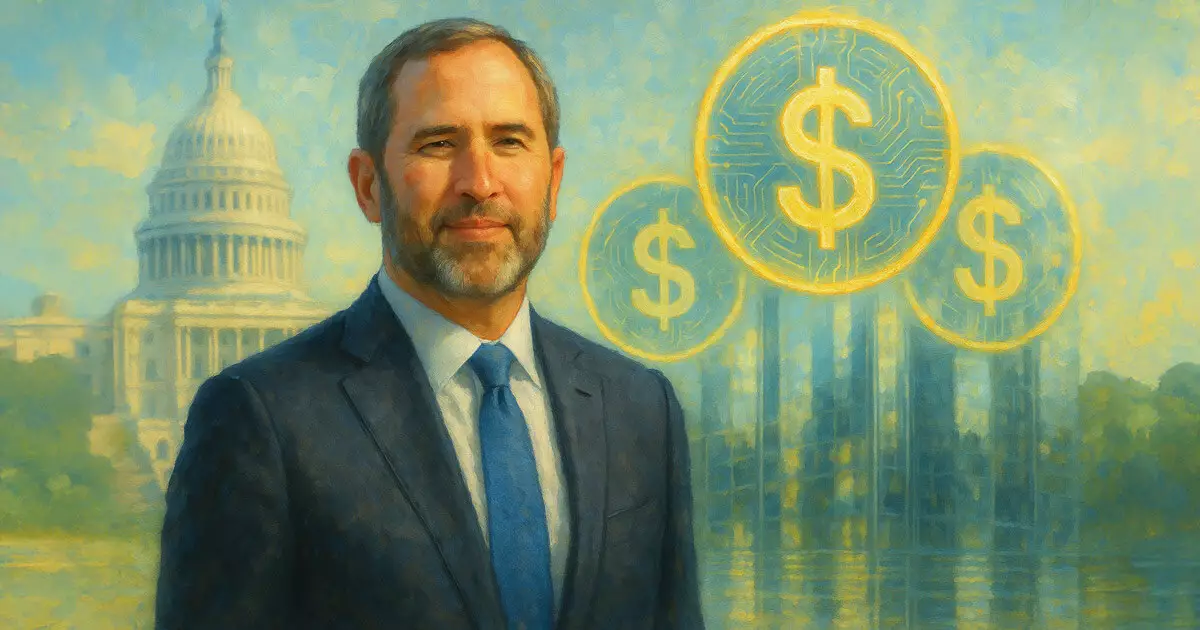In a rapidly evolving financial landscape, the call for decisive regulatory frameworks surrounding stablecoins is more critical than ever. Ripple CEO Brad Garlinghouse recently underscored that the failure to establish clear guidelines could jeopardize the United States’ standing in the global arena. While some may dismiss these warnings as hype from the cryptocurrency sector, the reality is that the stakes are incredibly high. Stablecoins are not merely a passing novelty; they have become essential tools in the digital economy, and the lack of a structured regulatory environment could stifle innovation while other nations race ahead.
The Stranglehold of Stagnation
The U.S. Senate’s recent failure to advance the GENIUS Act—designed to provide a cohesive national approach to stablecoin regulation—highlights a concerning trend of legislative stagnation. With a vote of 49-48, lawmakers effectively dragged their feet on an issue that has significant implications for international financial competitiveness. U.S. Treasury Secretary Scott Bessent aptly described this inaction as a missed opportunity, signaling that a robust federal framework could enhance the U.S. dollar’s dominance at a time when its influence is already being challenged. The absence of clarity allows for a fragmented patchwork of state regulations, which ultimately hampers growth and limits the potential to harness technological advancements in financial innovation.
The Impending Global Competition
As countries like the UK and Switzerland forge ahead with innovative policies for stablecoins and digital currencies, the risk for the U.S. isn’t just losing a competitive edge; it’s about relinquishing its role as a global financial leader. The rigid regulatory mindset typical of traditional governance models may soon become obsolete if lawmakers fail to adapt to fast-paced changes. In this global race, hesitation translates directly into lost market share and diminished influence in shaping the future of the financial ecosystem.
A Critical Shift in Financial Infrastructure
According to data from a16z crypto, stablecoin transaction volumes soared to a staggering $1.82 trillion in March 2025. This meteoric rise indicates that stablecoins have moved beyond speculative assets and are now intricately linked to actual economic activities. The need for a regulatory framework is urgent not only for safeguarding investments but also for integrating stablecoins into mainstream financial operations. Companies like Stripe and Meta are already increasingly entrenching themselves in this sector, which calls for a symbiotic relationship between innovation and regulation.
A Call to Action for Lawmakers
The potential economic impacts of stablecoins are profound. We are witnessing a seismic shift in how payments and cross-border transactions are conducted, with stablecoins emerging as viable alternatives to traditional fiat currencies due to their inherent stability. Lawmakers must embrace the opportunity to create a unified federal approach, which not only promises growth but also positions the United States as a formidable power in financial technology. The gobbledygook often associated with legislative processes must be replaced by clarity and decisiveness, fostering an environment where innovation can thrive in a well-regulated fashion. The time for action is now; the world is watching, and the possibility of being left behind is hauntingly real.


Leave a Reply